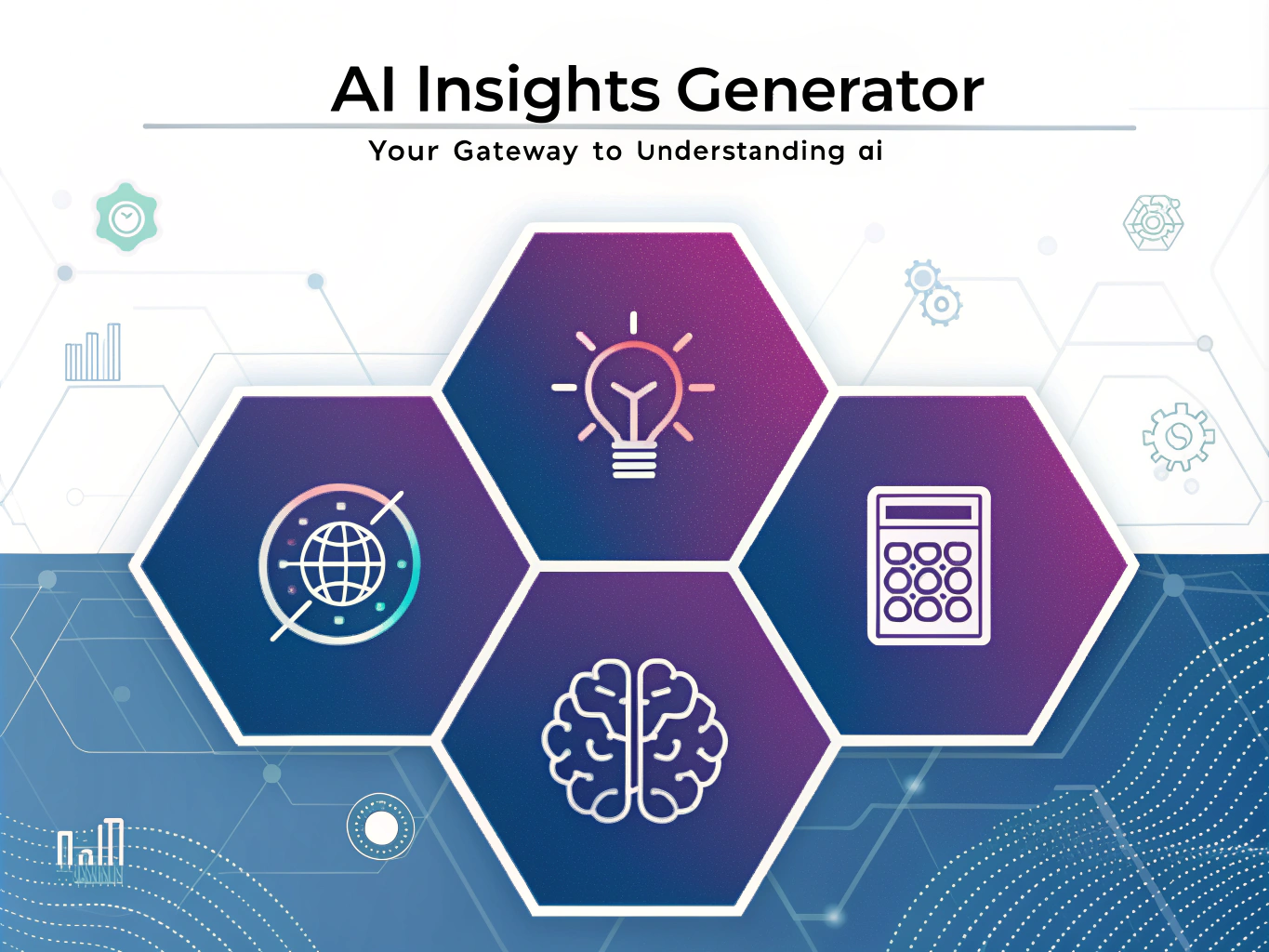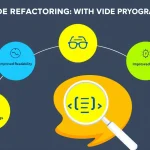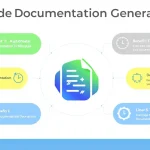Is this tool helpful?
How to Use the AI Insights Generator Effectively
The AI Insights Generator is a powerful tool designed to help you explore the fascinating world of artificial intelligence. To make the most of this tool, follow these simple steps:
- Specific Mathematical Concepts: In the first field, enter the mathematical concepts you’d like to focus on. For example, you might input “eigenvalues and eigenvectors in linear algebra” or “Bayesian probability in machine learning”.
- Programming Languages or Frameworks: Specify the programming languages or frameworks you’re interested in learning about. You could enter “Julia for scientific computing” or “Keras for deep learning”.
- AI Strategies: In the third field, mention specific AI strategies you want to explore. For instance, you might type “Generative Adversarial Networks (GANs) for image synthesis” or “Transformer models in natural language processing”.
- Technical Focus for News: Finally, indicate a particular technical aspect of AI you’d like to see highlighted in the news section. You could input “Quantum computing in AI” or “Edge AI for IoT devices”.
- Generate Insights: Click the “Generate AI Insights” button to receive a comprehensive breakdown of AI concepts, coding processes, strategies, and recent news tailored to your interests.
Remember, all fields are optional. If you leave a field blank, the generator will provide general information on that topic. The more specific your inputs, the more targeted and valuable the insights will be.
Unveiling the Power of AI: Your Personal Guide to Artificial Intelligence
Welcome to the AI Insights Generator, your gateway to understanding the intricate world of artificial intelligence. This innovative tool is designed to demystify the complex realm of AI, providing you with tailored information on the mathematical foundations, coding processes, strategic approaches, and cutting-edge developments in the field.
Whether you’re a curious beginner, a student delving into AI studies, or a professional looking to expand your knowledge, this tool offers a comprehensive overview of AI’s multifaceted landscape. By breaking down AI into its core components – mathematics, programming, strategies, and current advancements – the AI Insights Generator empowers you to grasp the essence of this transformative technology.
The Four Pillars of AI Understanding
- Mathematical Foundations: Explore the crucial mathematical concepts that form the bedrock of AI, from linear algebra to probability theory.
- Coding Processes: Discover the programming languages and frameworks that bring AI to life, turning abstract concepts into functional algorithms.
- AI Strategies: Uncover the diverse approaches AI employs to tackle complex problems, beyond traditional predictive analytics.
- Technical News: Stay updated with the latest breakthroughs and innovations in the rapidly evolving field of AI.
By leveraging this tool, you’ll gain a holistic understanding of AI, equipping yourself with the knowledge to navigate this exciting field confidently.
Benefits of Using the AI Insights Generator
1. Customized Learning Experience
The AI Insights Generator adapts to your specific interests and learning goals. By allowing you to input your areas of focus, it delivers tailored information that aligns with your current knowledge level and curiosity. This personalized approach ensures that you receive relevant and engaging content, maximizing your learning efficiency.
2. Bridging the Gap Between Theory and Practice
One of the unique advantages of this tool is its ability to connect theoretical concepts with practical applications. By exploring the mathematical foundations alongside coding processes and AI strategies, you’ll gain a comprehensive understanding of how abstract ideas translate into real-world AI solutions.
3. Staying Updated with Cutting-Edge Developments
The AI field is rapidly evolving, with new breakthroughs emerging regularly. The AI Insights Generator keeps you informed about the latest technical advancements, ensuring that your knowledge remains current and relevant in this dynamic field.
4. Holistic Understanding of AI
By covering multiple aspects of AI – from fundamental mathematics to advanced strategies – the tool provides a well-rounded perspective on artificial intelligence. This comprehensive approach helps you develop a nuanced understanding of AI’s capabilities, limitations, and potential future directions.
5. Accessible Complexity
The AI Insights Generator breaks down complex AI concepts into digestible chunks of information. It presents intricate ideas in a clear, concise manner, making advanced AI topics accessible to users with varying levels of technical background.
6. Inspiration for Further Exploration
As you delve into different aspects of AI through this tool, you’re likely to discover new areas of interest. This can spark curiosity and motivate further learning, potentially guiding your academic or professional pursuits in the AI field.
7. Time-Efficient Learning
Instead of scouring multiple sources for information on different aspects of AI, the AI Insights Generator consolidates key information into a single, comprehensive report. This saves valuable time and provides a structured learning path.
Addressing User Needs: Unraveling the AI Mystery
The AI Insights Generator is meticulously designed to address the multifaceted needs of users seeking to understand artificial intelligence. Let’s explore how this tool tackles specific challenges and provides valuable solutions:
1. Demystifying Mathematical Foundations
Many users find the mathematical concepts underlying AI intimidating. The AI Insights Generator breaks down these complex ideas into manageable parts. For instance, if a user inputs “eigenvalues and eigenvectors in linear algebra”, the tool might provide an explanation like this:
Eigenvalues (λ) and eigenvectors (v) are fundamental concepts in linear algebra that play a crucial role in many AI algorithms, particularly in dimensionality reduction and principal component analysis (PCA).
$$ Av = λv $$Where A is a square matrix, v is a non-zero vector (the eigenvector), and λ is a scalar (the eigenvalue). This equation tells us that when A operates on v, it’s equivalent to multiplying v by a scalar λ.
In the context of AI, eigenvalues and eigenvectors are used to:
- Identify principal components in data for feature extraction
- Optimize neural network architectures
- Analyze the behavior of recurrent neural networks
2. Illuminating Coding Processes
For users interested in the practical implementation of AI, the tool provides insights into programming languages and frameworks. If a user specifies “Julia for scientific computing”, the generator might offer information like:
Julia is a high-performance, dynamic programming language well-suited for numerical and scientific computing, including AI applications. Its features include:
- Just-in-time (JIT) compilation for high performance
- Multiple dispatch, allowing function behavior to be specialized for different argument types
- A rich ecosystem of libraries for machine learning and AI, such as Flux.jl for deep learning
Example of implementing a simple neural network in Julia using Flux:
using Flux# Define the model
model = Chain(
Dense(10 => 5, relu),
Dense(5 => 2),
softmax
)# Define loss function
loss(x, y) = Flux.crossentropy(model(x), y)# Optimize
opt = ADAM()
data = [(rand(10), rand(2)) for _ in 1:1000]
Flux.train!(loss, params(model), data, opt)
3. Exploring AI Strategies
The AI Insights Generator helps users understand various AI approaches beyond predictive analytics. For instance, if a user inputs “Generative Adversarial Networks (GANs) for image synthesis”, the tool might provide an explanation like:
Generative Adversarial Networks (GANs) are an innovative AI strategy used for generating new, synthetic data that resembles a given dataset. In the context of image synthesis, GANs consist of two neural networks:
- Generator (G): Creates synthetic images
- Discriminator (D): Tries to distinguish between real and synthetic images
The two networks are trained simultaneously, with the generator trying to create increasingly realistic images to fool the discriminator, and the discriminator becoming better at detecting fake images. This adversarial process results in the generation of highly realistic synthetic images.
The objective function for GANs can be represented as:
$$ \min_G \max_D V(D,G) = \mathbb{E}_{x\sim p_{data}(x)}[\log D(x)] + \mathbb{E}_{z\sim p_z(z)}[\log(1-D(G(z)))] $$Where:
- G is the generator
- D is the discriminator
- x is real data
- z is random noise
- p_data is the distribution of real data
- p_z is the distribution of noise
4. Delivering Cutting-Edge AI News
To keep users informed about the latest developments, the AI Insights Generator provides recent technical news. For example, if a user specifies “Quantum computing in AI” as their area of interest, the tool might offer news like:
“Researchers at [University Name] have recently demonstrated a quantum algorithm that outperforms classical methods in solving certain optimization problems crucial for machine learning. This breakthrough could potentially accelerate training times for large neural networks by orders of magnitude, opening new possibilities for AI model complexity and efficiency.”
Practical Applications: AI Insights in Action
The AI Insights Generator isn’t just a theoretical tool; it has numerous practical applications across various fields. Let’s explore some real-world scenarios where this tool can make a significant impact:
1. Academic Research
For researchers and graduate students, the AI Insights Generator can serve as a valuable starting point for literature reviews and project planning. By inputting specific areas of interest, they can quickly gain an overview of relevant mathematical concepts, coding frameworks, and current research trends.
Example: A PhD student beginning a research project on reinforcement learning for robotics could use the tool to get a comprehensive overview of:
- Key mathematical concepts like Markov Decision Processes and Bellman equations
- Popular reinforcement learning libraries in Python, such as OpenAI Gym and Stable Baselines
- Recent advancements in model-based reinforcement learning for robotic control
2. Industry Applications
Professionals in various industries can leverage the AI Insights Generator to stay updated on AI technologies relevant to their field and explore potential implementation strategies.
Example: A financial analyst interested in applying AI to stock market prediction might use the tool to learn about:
- Time series analysis techniques and stochastic processes
- Python libraries for financial modeling, such as pandas_datareader and statsmodels
- Recent developments in using transformer models for financial forecasting
3. Educational Settings
Educators can use the AI Insights Generator to create comprehensive lesson plans and provide students with up-to-date information on AI topics.
Example: A computer science professor preparing a course on natural language processing could use the tool to:
- Refresh their understanding of information theory and probabilistic language models
- Explore recent advancements in transformer architectures like GPT-3 and BERT
- Find practical coding examples using popular NLP libraries like spaCy and NLTK
4. Entrepreneurship and Innovation
Entrepreneurs and innovators can use the AI Insights Generator to explore potential applications of AI in their business ideas or to stay ahead of technological trends in their industry.
Example: A startup founder developing an AI-powered healthcare application might use the tool to understand:
- Mathematical foundations of machine learning in medical diagnosis
- Python libraries for handling medical imaging data, such as PyDicom and SimpleITK
- Recent advancements in federated learning for preserving patient privacy in distributed healthcare systems
5. Journalism and Technical Writing
Technology journalists and technical writers can use the AI Insights Generator to quickly grasp complex AI concepts and stay updated on the latest developments in the field.
Example: A tech journalist writing an article on the impact of AI in autonomous vehicles could use the tool to:
- Understand the mathematical principles behind computer vision and sensor fusion
- Explore popular frameworks for autonomous driving, such as CARLA and AirSim
- Find recent news about advancements in edge AI for real-time decision making in autonomous vehicles
Frequently Asked Questions (FAQ)
Q1: Do I need to have a strong mathematical background to use this tool effectively?
A1: Not at all! The AI Insights Generator is designed to cater to users with varying levels of mathematical knowledge. It breaks down complex concepts into understandable explanations. However, if you’re interested in delving deeper into the mathematical aspects, the tool can provide more advanced information as well.
Q2: Can this tool help me choose which programming language to learn for AI?
A2: Absolutely! By exploring different programming languages and frameworks through the tool, you can gain insights into their strengths and applications in AI. This can help you make an informed decision about which language aligns best with your goals and interests.
Q3: How often is the news section updated?
A3: The AI Insights Generator pulls from recent and relevant sources to provide up-to-date information. While it doesn’t provide real-time updates, it aims to offer news and developments from the past few months to ensure relevance and currency.
Q4: Can I use this tool to learn about AI applications in specific industries?
A4: Yes! You can input industry-specific terms or applications in the relevant fields. For example, if you’re interested in AI in healthcare, you could input “medical imaging analysis” or “drug discovery algorithms” to get targeted insights.
Q5: Is this tool suitable for beginners in AI?
A5: Definitely! The AI Insights Generator is designed to be accessible to beginners while also providing value to more advanced users. It explains concepts from foundational levels and can adapt to your specific level of understanding based on your inputs.
Q6: Can this tool help me with my AI-related homework or projects?
A6: While the AI Insights Generator is not designed to solve specific homework problems, it can be an excellent resource for understanding concepts, exploring relevant coding frameworks, and staying updated on AI strategies. It can provide a solid foundation and starting point for your projects.
Q7: How does this tool differ from a simple web search on AI topics?
A7: Unlike a general web search, the AI Insights Generator provides a curated, comprehensive overview that connects mathematical concepts, coding processes, AI strategies, and recent news. It offers a more holistic and tailored learning experience based on your specific interests.
Q8: Can I use the information provided by this tool in my own work or publications?
A8: The AI Insights Generator provides general knowledge and insights about AI. While you can use this information to enhance your understanding and guide further research, it’s always best to cite primary sources in academic or professional work.
Q9: Does this tool provide code samples or tutorials?
A9: Yes, the AI Insights Generator can provide basic code samples and explanations of coding processes related to AI. However, it’s not a full-fledged coding tutorial platform. It’s designed to give you an overview and starting point for further learning.
Q10: Can this tool predict future trends in AI?
A10: While the AI Insights Generator provides information on current trends and recent developments, it doesn’t make specific predictions about future trends. However, understanding the current state of AI can help you make informed guesses about potential future directions in the field.
Important Disclaimer
The calculations, results, and content provided by our tools are not guaranteed to be accurate, complete, or reliable. Users are responsible for verifying and interpreting the results. Our content and tools may contain errors, biases, or inconsistencies. We reserve the right to save inputs and outputs from our tools for the purposes of error debugging, bias identification, and performance improvement. External companies providing AI models used in our tools may also save and process data in accordance with their own policies. By using our tools, you consent to this data collection and processing. We reserve the right to limit the usage of our tools based on current usability factors. By using our tools, you acknowledge that you have read, understood, and agreed to this disclaimer. You accept the inherent risks and limitations associated with the use of our tools and services.







